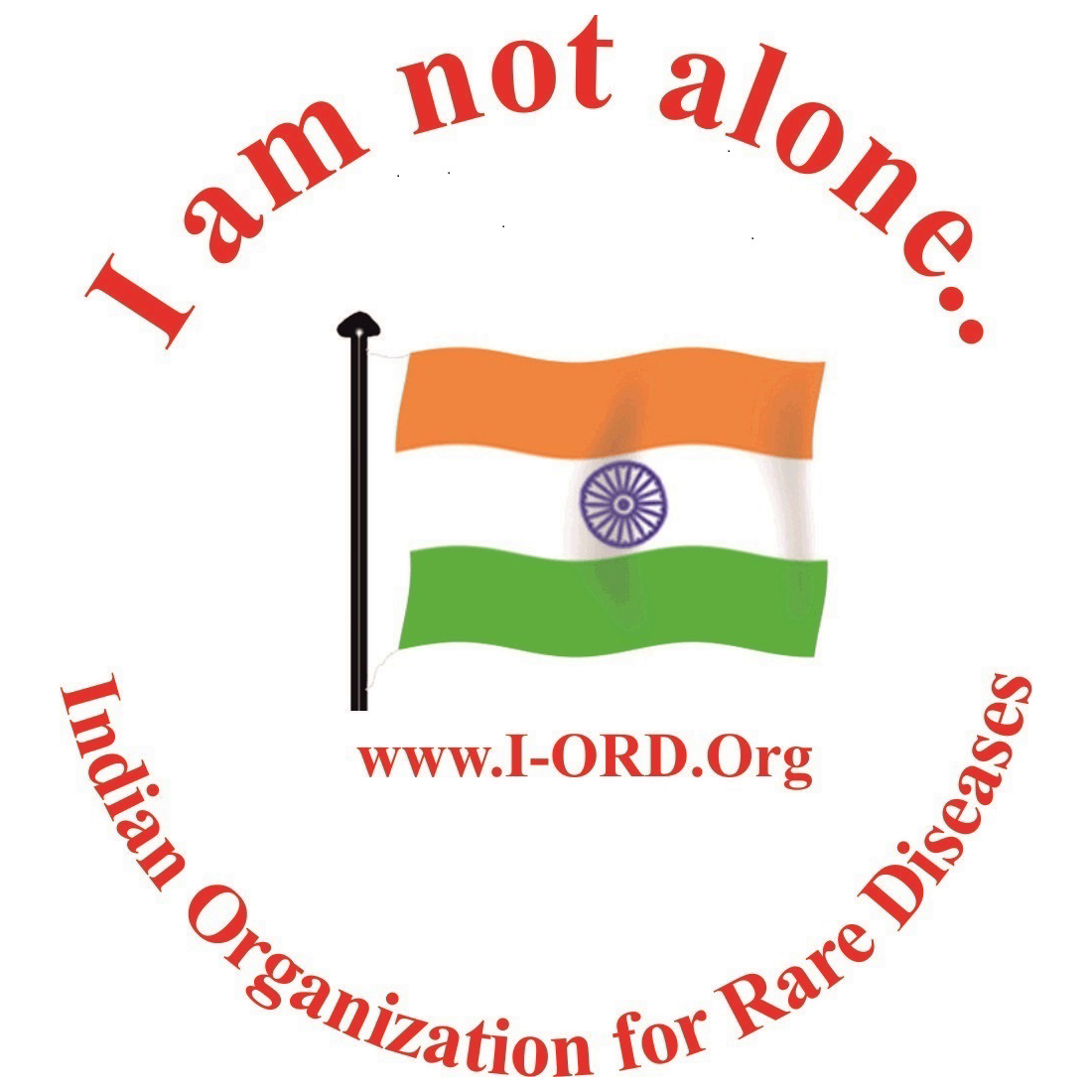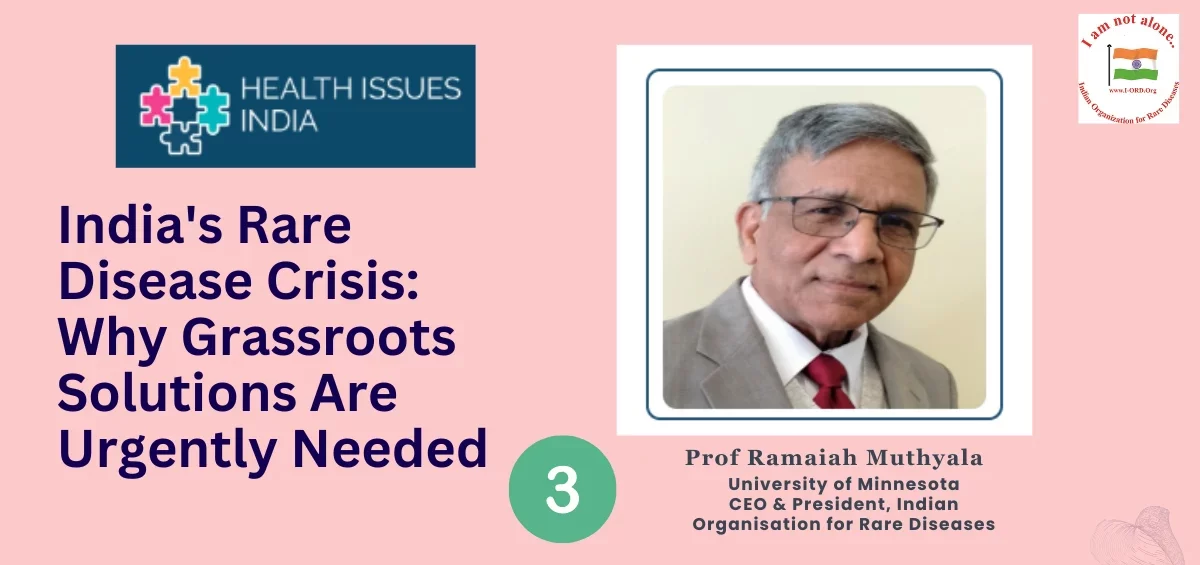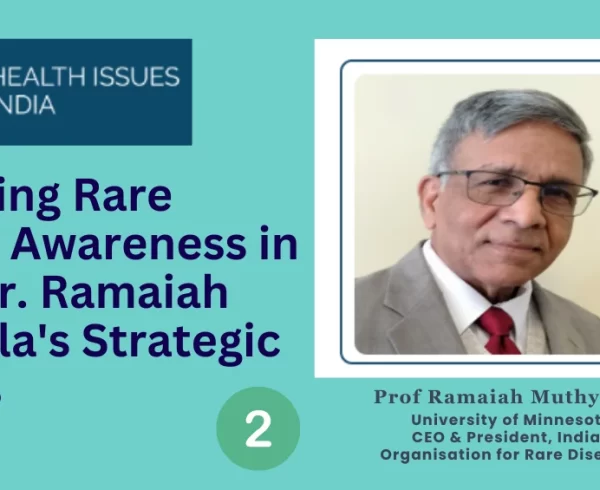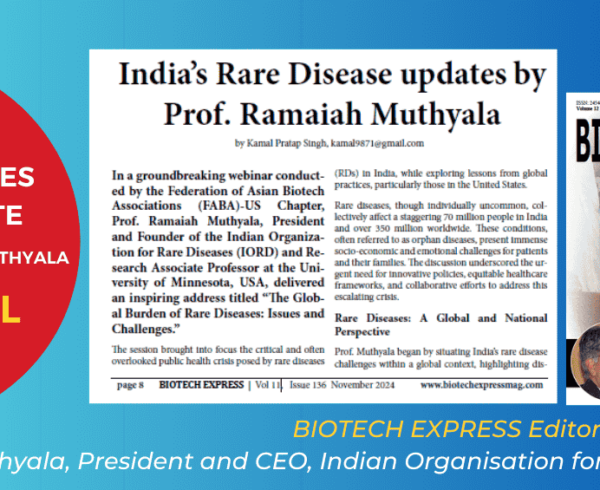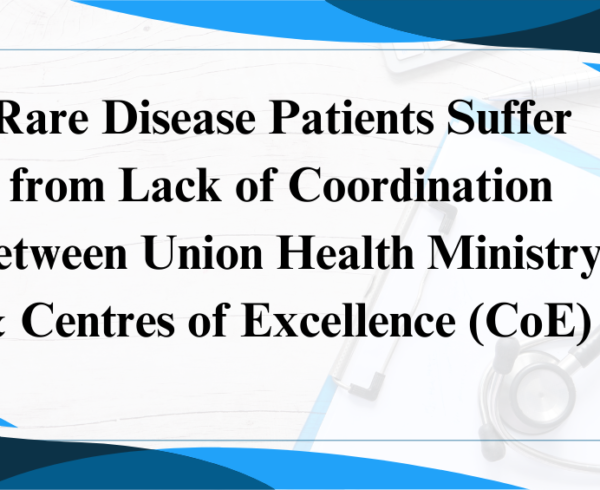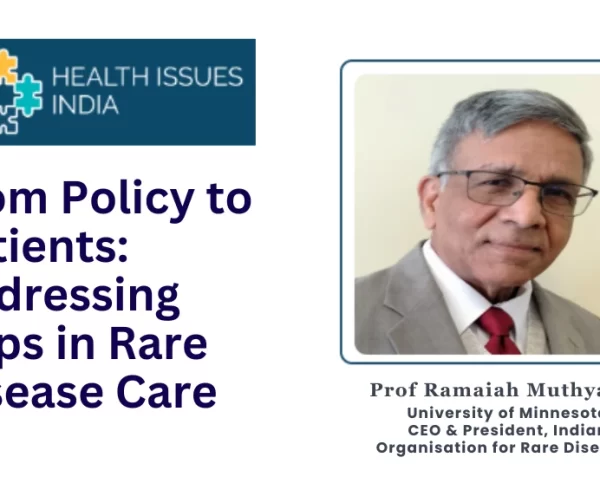The following is an excerpt from a three-part interview series featuring IORD CEO & President Prof. Ramaiah Muthyala. In this segment, he speaks to Health Issues India about the urgent need for a ground-up approach to rare disease care in India. Read more at www.healthissuesindia.com
Did you know that nearly one-third of the global rare disease population resides in India? In a country where healthcare resources are stretched thin and the public health budget remains modest, addressing the complexities of rare diseases can feel like an insurmountable challenge. While significant policy-level changes have taken place over the last few years experts believe real, sustainable change will only come when we start working from the ground up.
In this piece, we explore the urgent need for grassroots-level implementation, the impact of recent initiatives, and innovative ideas with Prof Ramaiah Muthyala, CEO and President of Indian Organisation for Rare Diseases (IORD), a leading advocate and expert in rare disease policy.
Apart from manufacturing and policy-level changes, are there any other grassroots-level implementation aspects that should be considered from a bottom-up approach?
The problem is very complex, and our population is massive. One-third of the global rare disease population is in India. Meanwhile, our healthcare budget is very small.
We cannot aim for everything at once. Instead of trying to solve the entire problem in one go, we should progress at a realistic pace. Courts are not the solution; policymakers should think twice before making rushed decisions. For example, the 2017 policy was drafted simply because the court mandated it. Instead of waiting for such mandates, we should proactively conduct basic groundwork.
Over the last two years, the government has made several announcements regarding rare disease funding and treatment. One major development was allowing clinical trials for orphan drugs already tested globally to enter India. From your perspective, which of these initiatives have had the most tangible impact?
In the past two years, the Indian Government has indeed launched several initiatives, including NPRD 2021, which was a crucial step in recognising rare diseases as a healthcare priority. Credit must be given where it is due. With the involvement of the Delhi High Court, the Ministry of Health and Family Welfare allocated ₹900 crores for the centralised procurement of high-value drugs for rare diseases. While this financial assistance is significant, whether it translates into meaningful support for the rare disease community remains to be seen.
Additionally, in 2022, certain rare diseases were included under the Ayushman Bharat PMJAY scheme, making treatment more affordable, especially for rural and underserved populations. In 2023, the Government waived clinical trial requirements for some rare diseases, allowing quicker import of essential medicines through amendments to the Drugs and Cosmetics Act rules.
Several states, including Tamil Nadu, Maharashtra, and Kerala, have begun developing their rare disease policies and expanding health insurance coverage. Just recently, in 2025, Andhra Pradesh partnered with the pharma industry, diagnostic labs, and patient organisations to strengthen rare disease management.
Affordability remains a key barrier, and as you mentioned, the ₹50 lakh cap is just a drop in the ocean when it comes to rare disease management. Based on your global perspective, what innovative funding mechanisms can help bridge the financial gap, especially for middle- and low-income families?
Affordability is the biggest hurdle in rare disease management, particularly for middle- and lower-income families in India. The cost of diagnosis, treatment, and long-term care is overwhelming. Although crowdfunding platforms were introduced in NPRD 2021, their impact has been limited. One possible solution is for the Government to subsidise health insurance premiums for rare diseases under schemes like Ayushman Bharat and introduce tiered policies that offer basic coverage for economically disadvantaged families.
A well-designed insurance model that spreads financial risk across a larger population could make treatment more affordable. However, we still lack such a model in India. In 2025, the Delhi High Court suggested stronger private-public partnerships (PPPs) between government bodies and pharmaceutical companies to subsidise rare disease medications. While orphan drugs are exempt from import duty, the process of importing them remains complex and unfriendly for individual patients. Additionally, while the FDA and EMA have approved over 600 orphan drugs, fewer than 5% of them, mainly the most expensive ones, are available in India.
A potential solution is to encourage Indian pharmaceutical companies to develop less expensive generic alternatives through incentives. However, the biggest hurdles remain limited healthcare resources, a small healthcare budget, and the Government’s level of commitment to rare diseases.
